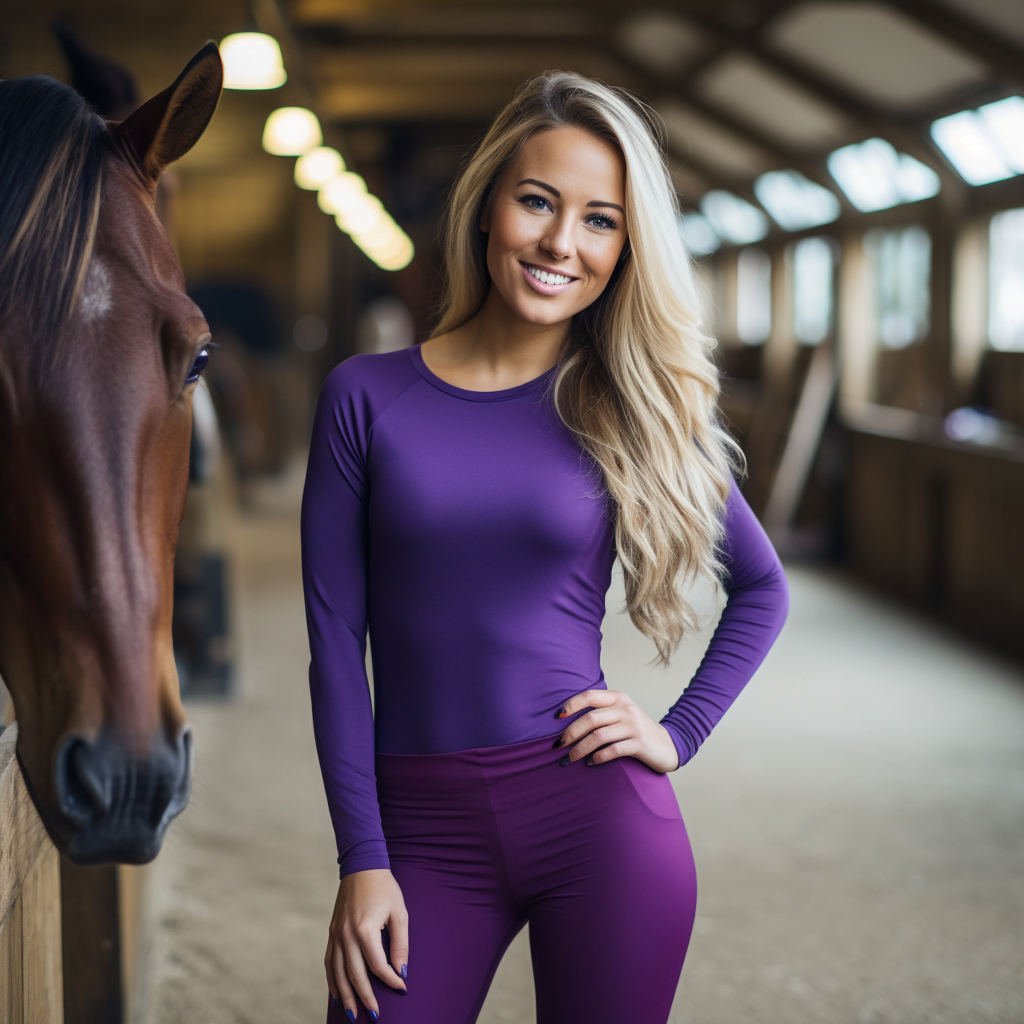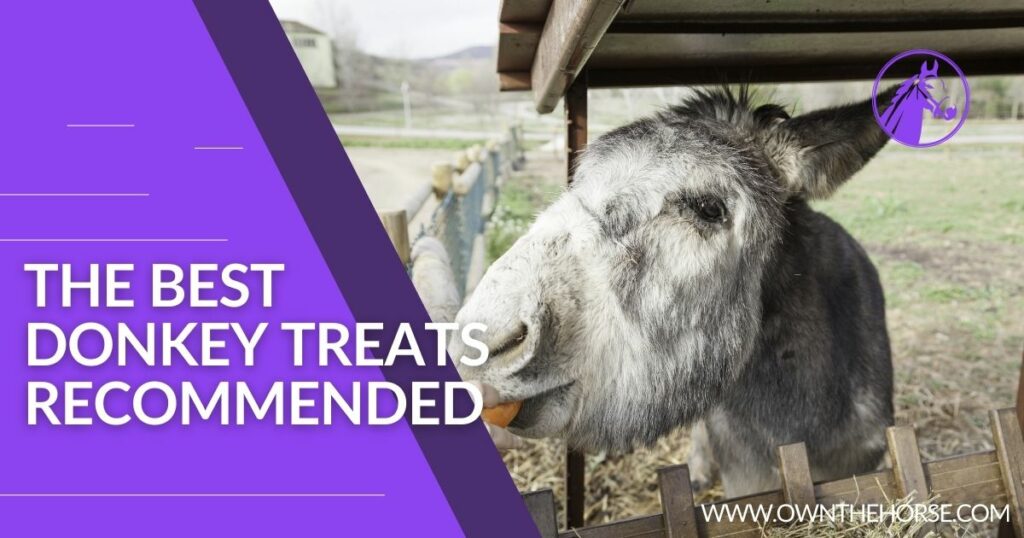As an Amazon Associate we earn from qualifying purchases.
Donkeys are wonderful and gentle creatures that deserve our love and care. As responsible donkey owners, it is our duty to provide them with the best possible care, including a nutritious diet and delicious treats. In this article, we will explore the best donkey treats available and how they can contribute to the overall well-being of your beloved donkey.
Our 3 Best Donkey Treats on Amazon
Manna Pro Bite-Size Nuggets
If you’re looking for a delicious treat for your donkey that they are sure to love, the Manna Pro Bite-Size Nuggets Butterscotch Flavour for Horses from Amazon is the perfect choice. Not only are these tasty little nuggets full of delicious butterscotch flavour, but they are also specially formulated for horses and donkeys with a balanced blend of vitamins, minerals, and amino acids to support the overall health and wellbeing of your animal. Plus, the bite-size nuggets make it easy to feed your donkey the right amount without making a mess. With Manna Pro, you can be sure your donkey is getting all the nutrition they need in an tasty treat they will love.
Mrs Pastures Cookies
Mrs. Pastures Horse Cookies are the perfect choice for your donkey’s treats. With a delicious blend of oats and molasses, these treats are sure to keep your donkey happy and satisfied as they enjoy their snack. The hearty mixture of ingredients not only keeps your donkey entertained, but is also packed with essential vitamins and minerals for optimal health. Mrs. Pastures Horse Cookies are baked to ensure each treat remains firm and easy to chew. Additionally, the unique shape of the cookies make it easy for even the pickiest of donkeys to find and enjoy a delicious treat. When you choose Mrs. Pastures Horse Cookies, you can be sure your donkey is getting the best nutrition and great-tasting treats it deserves.
Manna Pro Apple Wafers
Another great choice for donkey treats is Manna Pro Apple Wafers. With a refreshing combination of apples, oats, and wheat, these treats provide your donkey with a healthy dose of extra energy. Each wafer is made with all-natural ingredients to assure your donkey receives optimal nutrition. Even better, these apple wafers are completely free of preservatives and artificial colors. The taste and texture is sure to keep your donkey begging for more! Keep your donkey entertained with Manna Pro Apple Wafers and rest assured that your donkey is receiving the nutrition it deserves.
Why Treats are Important for Donkeys
Donkeys, like any other animals, enjoy the occasional treat. Treats can be a valuable tool in training, positive reinforcement, and bonding with your donkey. By providing them with tasty treats, you create a positive association and strengthen the bond between you and your donkey.
Choosing the Best Donkey Treats
When selecting treats for your donkey, it is crucial to choose options that are safe, nutritious, and specifically designed for donkeys. Here are some key factors to consider when choosing the best donkey treats:
Nutritional Value: Opt for treats that are high in fiber and low in sugar. Donkeys have unique dietary requirements, and their treats should align with their nutritional needs. Look for treats that contain natural ingredients and avoid those with artificial additives or fillers.
Size and Texture: Donkeys have different preferences when it comes to treat sizes and textures. Some may prefer small, bite-sized treats, while others enjoy larger treats that they can nibble on. Experiment with different sizes and textures to see what your donkey enjoys the most.
Variety: Just like humans, donkeys appreciate variety in their diet. Offering a range of treats not only keeps them interested but also ensures they receive a balanced intake of nutrients. Consider rotating between different flavors and types of treats to keep your donkey’s taste buds happy.
Other Donkey Treats to Consider
- Carrots: Carrots are a classic and widely loved treat among donkeys. They are crunchy, tasty, and packed with vitamins and minerals. Remember to cut them into small, manageable pieces for your donkey to enjoy.
- Apples: Another favorite among donkeys, apples are not only delicious but also a great source of fiber and hydration. Remove the seeds and cut the apple into slices or cubes to make it easier for your donkey to consume.
- Peppermints: Donkeys often have a sweet tooth, and peppermints can be an excellent occasional treat. However, it is important to feed them in moderation due to their sugar content. Look for sugar-free peppermints if you want to minimize the sugar intake.
- Hay Cubes: Hay cubes are not only a tasty treat but also a beneficial addition to your donkey’s diet. They provide additional fiber and can help satisfy their natural instinct to chew and forage.
- Herbal Treats: Some companies offer specially formulated herbal treats for donkeys. These treats often contain a blend of herbs that can promote digestion, support the immune system, and provide overall health benefits.
SEE ALSO : The 3 Best Donkey Wormers For Your Donkey Reviewed
Remember, treats should only make up a small portion of your donkey’s diet. The majority of their nutrition should come from high-quality hay or pasture, along with a balanced diet formulated for their specific needs.
Best Donkey Treats – Final Thoughts
Providing your donkey with treats can be a rewarding experience for both of you. By choosing the best donkey treats that are nutritious, safe, and enjoyable, you can ensure your donkey remains happy and healthy. Treats serve as a form of positive reinforcement and can be used during training sessions or simply as a way to show your donkey some extra love and affection.
Amazon and the Amazon logo are trademarks of Amazon.com, Inc, or its affiliates.

Hey there, I’m Jasmine! I’m a total horse fanatic and have been working with these amazing animals for as long as I can remember. I’m passionate about sharing my love for horses with others and helping them learn more about these majestic creatures. As a professional horse trainer and riding instructor, I’ve developed a deep understanding of equine science and am committed to the welfare of horses. That’s why I founded OwnTheHorse.com, a blog where I share my knowledge and insights with fellow horse enthusiasts. I love connecting with my readers and building a friendly community of horse lovers. Whether you’re a seasoned equestrian or just starting out, I’m here to help and inspire you. Above all, I’m a friendly and compassionate person who truly cares about the well-being of horses and their human companions.

